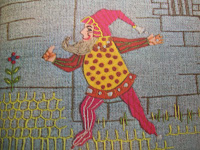The Story of The Statue of Liberty is written by Natalie Miller. This books tells all about the Statue of Liberty. It is the tallest statue in the world, made of copper, and located in the New York Harbor. It was designed by Frederic Auguste Bartholdi in 1875 to signify American independence, although it took him many years to complete. Fundraisers were held and donations were given in order to pay for the expenses of materials and workers. The first section finished was the hand with the torch. It was shipped to America and people paid admission to climb the stairs leading to the balcony. Bartholdi knew how to sculpt but he did not know how to support the statue, so he asked for help from Alexandre Gustave Eiffel, who later designed the Eiffel Tower. He made a steel skeleton to support the statue. Twelve years after the idea of building the Statue of Liberty, she was finally complete. A star shaped pedestal had been designed for the statue to be placed upon. On October 28, 1886 the unveiling of the statue took place. In 1924, the statue was declared a national monument. In 1981, engineers examined the statue and it was estimated that $35 million were needed to repair the statue from age and rust. This made the statue safer and more pleasant for visitors. The Statue of Liberty is an instantly recognizable image in America.
I would use this book to end a unit on the American Revolution and Declaration of Independence. The Statue of Liberty to is signify the importance of these two events. I think it would be a good way to summarize what happened during this time and for students to learn its value. This book helps students understand what the Statue of Liberty represents and to show that it is more than just something to look at. It is a piece of art that signifies a major event in America's history.














